Why Logging Controlled Drugs in Real Time Matters?
Everyone holding a DEA registration and licensed to use controlled substances knows that it’s important to adhere to both federal and state requirements. We’ve been told that failure to comply can result in the loss of your license and significant fine. We know that the DEA can conduct audits on registrants at any time to ensure compliance. However what are the things we can do to reduce the risks of a bad audit? We’re here to share insights and to help highlight what these best practices are, and why we should follow them.
In our frequent discussions with DEA experts, we consistently hear from them that Controlled Drug Logbooks are often cited as THE primary source of infractions during audits. It is widely understood that no one is perfect in record-keeping, and there will always be minor mistakes made that need to be corrected. But the sheer number of possible infractions, and the likelihood of erroneous entries which can each trigger a hefty fine, make your logbook one of the riskiest part of compliance in your clinic.
So, how can you ensure you’re in the best position to pass an audit? One thing that matters to a DEA agent or any other regulatory entity reviewing your hospital’s controlled drug compliance practices, is evidence that you and your team care. Auditors want to see the diligent effort that has been made towards maintaining compliance and reducing the risk of errors, because in the end compliance is in a partnership.
We refer to the eCFR requirements below as a starting point:
The three most important characteristics of a strong record keeping process, whether you are doing a physical paper logbook or utilizing a digital logbook are listed below.
Real-time logging
Container Tracking
At the heart of a robust controlled substance management strategy lies detailed container tracking.
Activity Tracking
It is crucial to establish a clear signature approval process, especially when controlled drugs are involved.
Make sure you can prove to your auditor that you and your team are logging your controlled drug usage in a timely and accurate manner. Be sure you have a grasp on all containers that have entered your hospital, and why, when, and who accessed these containers, including sign offs on any modifications or corrections. DEA experts emphasize that writing down your usage for your controlled drugs WHEN you use them, is the only way to ensure that you don’t miss out on documentation and introduce unnecessary errors. It shows that you take the compliance process seriously and spend the effort and prioritize record keeping to avoid omissions or mistakes.
Best in class solutions that help practices with drug logging need to give their users the ability to log in real time with all the necessary details and signatures, period. Beware of solutions that sound great, but don’t actually meet the fundamental requirements. They will put you at greater risk for audit failures, and at the very least make it much harder for you to reconcile and balance your controlled drug log inventory. One thing we often see that worries us, are solutions creating controlled logbook records from things not intended to be log records, such as invoices or inventory histories in PIMS. It sounds great, but 100% relying on using an invoice which could be modified, inaccurate, or delayed from the actual instance of accessing the container of controlled drugs, puts you at a huge disadvantage during an audit of your SOP. DEA consultants strong advise against using controlled drug logging solutions that misses out on one or more of the critical requirements around real time, container specific, accountable activity tracking of your controlled drug transactions. For them the question is so simple because they’ve seen so many audits go bad. When your controlled logbook is one of the greatest risks for compliance, why choose to be at a disadvantage?

What sets VetSnap apart is our strong commitment to compliance, coupled with our user-friendly interface and intelligent process design, which helps your team on your compliance journey:
- This starts with real-time log creation using data already available from your Practice Information Management System (PIMS)
- Access and accountability is tracked down to individualized signatures
- Equal care is taken for container tracking, ensuring that transactions are tied and documented to an unique container ID
- In addition, with our overnight invoice auditing feature, you can easily reconcile any discrepancies you might find in your logs, including quickly generating missing logs from invoices, and vice versa helping you identify when invoices were missed, for easy charge capture.
VetSnap is here to help your team if things slip between the cracks, doing so in a way that encourages best practices around compliance. Remember, when undergoing a DEA audit, your logbook accuracy and completeness, and your Standard Operating Procedures (SOP) are all critical for success. For further insights, please see our analysis on The Top 6 Reasons that Your Audit Can Fail, and see how VetSnap can help you shore up your compliance game.


